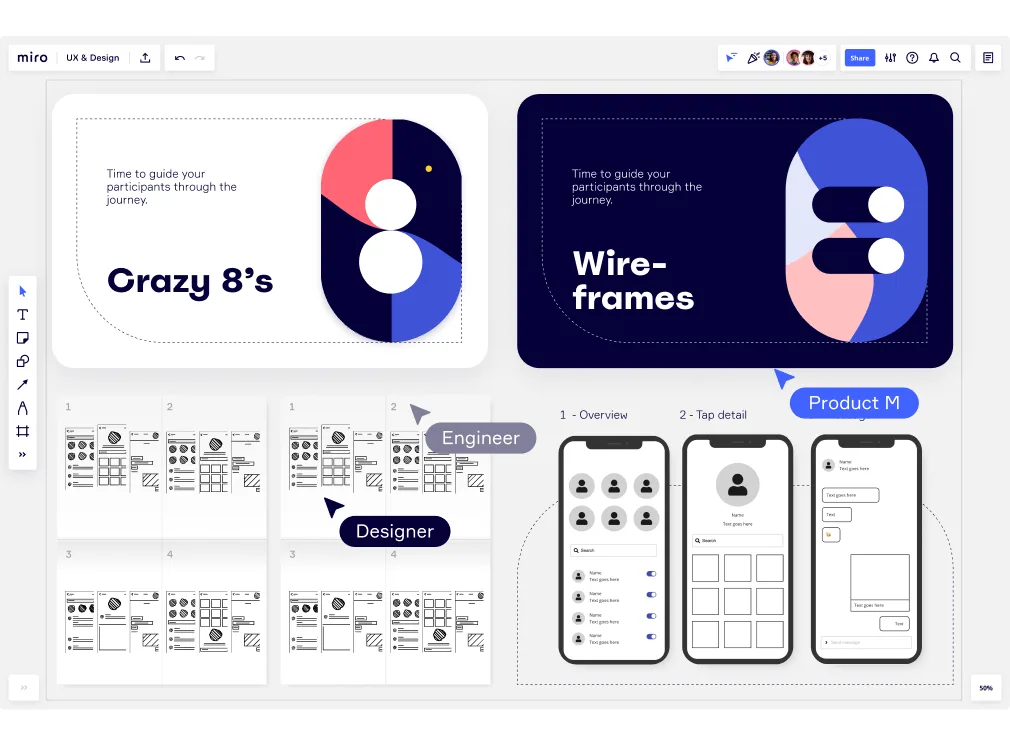
Service Design vs. UX Design

Optimizing for User Experiences
User experiences have emerged as the driving force behind business success and ensuring seamless interactions and customer satisfaction have become crucial for organizations seeking to thrive.This demand has given rise to two critical design disciplines - service design and UX design. While both share the common objective of optimizing user experiences, they approach this goal from different perspectives.This guide will cover both Service design and UX design in detail to help you to better understand how to deliver exceptional and delightful experiences that resonate with users.
Understanding Service Design and UX Design
Service design revolves around creating end-to-end service experiences, encompassing all touchpoints and interactions with customers throughout their journey. On the other hand, UX design focuses on crafting intuitive and user-friendly digital product experiences, aiming to deliver exceptional interactions and user satisfaction. Let's dive into the specifics in more detail.
Definition of Service Design
Service design is a comprehensive and user-centric approach to designing and improving services. It involves understanding the needs and expectations of users and stakeholders to create seamless, efficient, and delightful experiences.Service design extends beyond individual touchpoints, taking into account the entire service ecosystem and its various interactions. It aims to align business objectives with user needs, resulting in a service that not only meets customers' expectations but also enhances brand loyalty and overall business performance.
Key Concepts and Principles of Service Design
In service design, several key concepts and principles guide the process of creating exceptional experiences. These include:
Customer Journey Mapping: Understanding the user's journey through various touchpoints, interactions, and emotions to identify pain points and areas for improvement.
Service Blueprinting: Visualizing the entire service process, including frontstage and backstage activities, to ensure a holistic view and streamline operations.
Co-Creation: Involving users, stakeholders, and employees in the design process to gain valuable insights and create more relevant solutions.
Ecosystem Thinking: Considering the interconnections between different parts of the service and their impact on the overall user experience.
Definition of UX Design
UX design, short for User Experience design, is focused on optimizing digital product experiences. It involves understanding user behavior, needs, and motivations to create intuitive, efficient, and enjoyable interactions within digital interfaces. UX designers work to ensure that every element of the user journey, from the first touchpoint to the final interaction, is smooth and meaningful.
Key Elements of UX Design
Key elements that define the field of UX design include:
User Research: Conduct research to gain insights into user preferences, pain points, and behavior to inform design decisions.
Information Architecture: Organizing content and information in a way that is easy for users to navigate and find what they need.
Wireframing and Prototyping: Creating low-fidelity prototypes to test and iterate on design concepts before implementation.
Interaction Design: Defining how users will interact with the product and ensuring the interactions are intuitive and efficient.
Differences and Overlaps
Scope and Focus
The scope of service design primarily extends to service-based experiences, including processes, interactions, and customer touchpoints. It aims to optimize service delivery and create memorable customer journeys. In contrast, UX design concentrates on the digital realm, focusing on creating user-friendly and delightful interactions within digital products such as websites, apps, and software.
Overlapping Methodologies
Despite their different scopes, service design and UX design share some overlapping methodologies. Both disciplines heavily rely on a user-centered approach, involving users in the design process through methods like user interviews and testing. Additionally, both fields employ an iterative design process, continuously refining and improving solutions based on feedback and data analysis.
When to Use Service Design or UX Design
Appropriate Situations for Service Design
Service design excels in optimizing complex service-based businesses, such as healthcare and hospitality. Successful implementation of service design can be seen in personalized customer service experiences.
Appropriate Situations for UX Design
When developing digital products, UX design takes precedence to ensure user-friendly interfaces. Exceptional user experiences achieved through UX design can be observed in intuitive mobile applications.
Integrating Service Design and UX Design
Benefits of Integration
Integrating service design and UX design leads to a holistic approach, resulting in seamless user experiences. User interactions within services and digital products become interconnected, fostering satisfaction.
Collaboration and Communication
Effective collaboration between service design and UX design teams is essential for successful integration. Clear communication ensures a unified vision, allowing both teams to leverage each other's expertise.
Challenges and Misconceptions
Challenges: One of the common challenges in service design is aligning multiple stakeholders' interests and requirements while maintaining a user-centric approach. Additionally, implementing service design across large organizations can be complex, requiring coordination and buy-in from various departments.
Misconceptions: One misconception about UX design is that it solely involves creating aesthetically pleasing interfaces. In reality, UX design goes beyond visuals, emphasizing usability and functionality to provide meaningful experiences. Another misconception is that service design is only applicable to service-based industries, while it can also be adapted to enhance non-service products and processes.
Final Thoughts on Service Design vs UX Design
Understanding the contrast between service design and UX design is key to optimizing user experiences. By adopting a user-centric approach and integrating the strengths of both disciplines, businesses and products can deliver exceptional and delightful experiences that resonate with users.
Being aware of potential challenges and misconceptions in each discipline further enriches the overall understanding of their roles in creating successful user experiences. Embracing service design and UX design as complementary tools empower organizations to build a user-centric culture, resulting in greater customer satisfaction, loyalty, and overall success in the digital age.
Miro's UX Design Tool provides a collaborative platform for service design teams to seamlessly map customer journeys and service blueprints, facilitating cross-functional collaboration and improving service delivery.